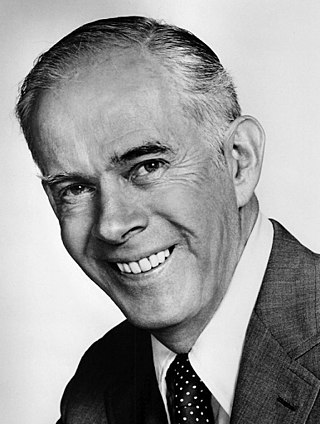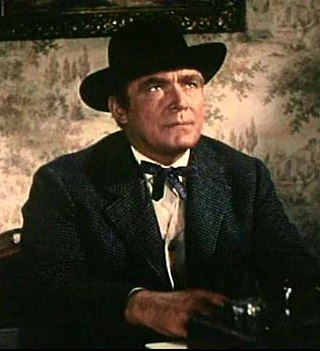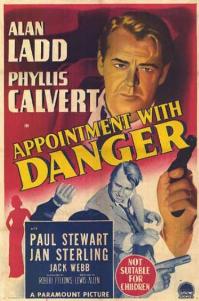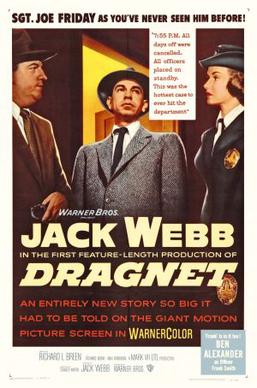
Dragnet is an American media franchise created by actor and producer Jack Webb, following Los Angeles Police Department (LAPD) Detective Joe Friday and his partners as they conduct by-the-book police work and solve crimes in Los Angeles. Originating as a radio drama on NBC in 1949, Dragnet has been adapted into several successful television shows and films, though the franchise's popularity has reduced since Webb's death in 1982. Its name is derived from the police term "dragnet", a system of coordinated measures for apprehending criminals or suspects.

John Randolph Webb was an American actor, television producer, director, and screenwriter, most famous for his role as Joe Friday in the Dragnet franchise, which he created. He was also the founder of his own production company, Mark VII Limited.

Harry Morgan was an American actor whose television and film career spanned six decades. Morgan's major roles included Pete Porter in both December Bride (1954–1959) and Pete and Gladys (1960–1962); Officer Bill Gannon on Dragnet (1967–1970); Amos Coogan on Hec Ramsey (1972–1974); and his starring role as Colonel Sherman T. Potter in M*A*S*H (1975–1983) and AfterMASH (1983–1985). Morgan also appeared as a supporting player in more than 100 films.

Mathnet is a segment on the children's television show Square One Television that follows the adventures of pairs of police mathematicians. It is a pastiche of Dragnet.

William Boyett was an American actor best known for his roles in law enforcement dramas on television from the 1950s through the 1990s.

Whitner Nutting Bissell was an American character actor.

Roy Roberts was an American character actor. Over his more than 40-year career, he appeared in more than nine hundred productions on stage and screen.

Herman Arthur "Harry" Lauter was an American character actor.

Crime Wave is a 1954 American film noir starring Sterling Hayden and Gene Nelson, and directed by Andre de Toth. It was adapted from a short story which originally appeared in The Saturday Evening Post - "Criminal Mark" by John and Ward Hawkins.

Douglas Fowley was an American movie and television actor in more than 240 films and dozens of television programs, He is probably best remembered for his role as the frustrated movie director Roscoe Dexter in Singin' in the Rain (1952), and for his regular supporting role as Doc Holliday in The Life and Legend of Wyatt Earp. He was the father of rock and roll musician and record producer Kim Fowley.

Claude Aubrey Akins was a Cherokee character actor with a long career on stage, screen, and television. He was best known as Sheriff Lobo on the 1979–1981 television series B. J. and the Bear, and later The Misadventures of Sheriff Lobo, a spin-off series.

Alfred L. Werker was a film director whose work in movies spanned from 1917 through 1957. After a number of film production jobs and assistant directing, Werker co-directed his first film, Ridin' the Wind in 1925 alongside director Del Andrews. He was brought in by Fox Film Corporation executives to re-shoot and re-edit Erich von Stroheim's film Hello, Sister! (1933), co-starring Boots Mallory and ZaSu Pitts.

Reed Hadley was an American film, television and radio actor.

Appointment with Danger is a 1950 American crime film noir starring Alan Ladd and Phyllis Calvert, supported by Paul Stewart, Jan Sterling, and Jack Webb. Produced and distributed by Paramount Pictures, the drama was directed by Lewis Allen and written by Richard L. Breen and Warren Duff.

Bernard Philip Ofner, better known by his stage name Barney Phillips, was an American film, television, and radio actor. His roles include that of Sgt. Ed Jacobs on the 1950s Dragnet television series, appearances in the 1960s on The Twilight Zone, in which he played a Venusian living under cover on Earth in "Will the Real Martian Please Stand Up?", and a supporting role as actor Fletcher Huff in the 1970s CBS series The Betty White Show.

Robert Kent, was an American film actor. His career included starring roles in several film serials of the 1940s, including The Phantom Creeps, Who's Guilty?, and The Phantom Rider. He also had a role in the 1938 film The Gladiator and was Virginia Vale's leading man in Blonde Comet, a 1941 movie about a female racing driver.
Dragnet was an American radio series, enacting the cases of a dedicated Los Angeles police detective, Sergeant Joe Friday, and his partners. The show took its name from the police term "dragnet", meaning a system of coordinated measures for apprehending criminals or suspects.
William Erwin Walker, also known as Erwin M. Walker and Machine Gun Walker, was an American police employee and United States Army World War II veteran, known for having committed several thefts, burglaries, and shootouts with police in Los Angeles County, California, in 1945 and 1946, one of which resulted in a fatality. The film He Walked by Night (1948) was loosely based on Walker's 1946 crime spree.

Dragnet is a 1954 American crime film directed by Jack Webb and written by Richard L. Breen. The film stars Webb, Ben Alexander, Richard Boone, Ann Robinson, Stacy Harris, Virginia Gregg and Vic Perrin. The film was adapted from the radio series of the same name, and is part of the wider Dragnet media franchise. The film was released by Warner Bros. on September 4, 1954.
Thaddeus Franklin Brown was the police chief of the Los Angeles Police Department from July 18, 1966 to February 17, 1967. Brown, who was the LAPD's Chief of Detectives, was appointed police chief on July 18, 1966, following Chief William H. Parker's death on July 16, 1966. Brown was succeeded by Thomas Reddin on February 17, 1967. His brother, Finis Brown, was also on the LAPD, and was one of the noteworthy police officers who investigated the Elizabeth Short murder, also known as the Black Dahlia murder.

















